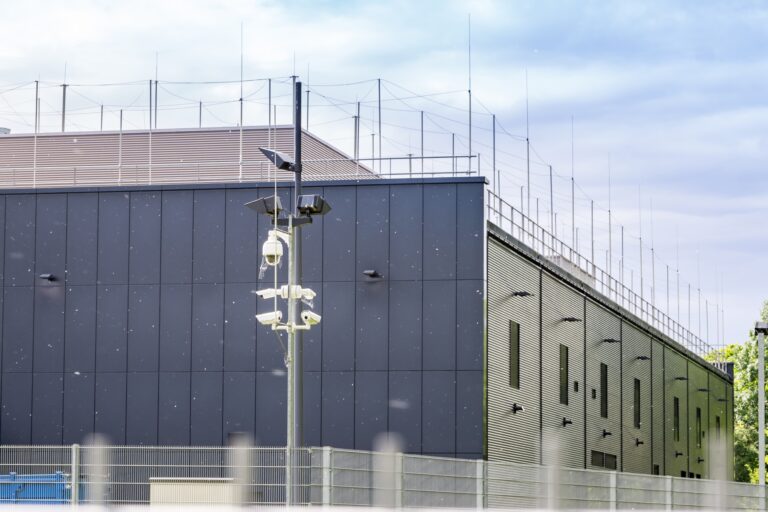Today, almost every business depends on technology. From online stores to office emails, one small tech problem can cause big issues, like lost money, upset customers, or even a damaged reputation. People now expect systems to be “always on.” But how can you keep everything running smoothly when your IT team can’t be everywhere at once?
That’s where remote infrastructure monitoring (RIM) helps. It lets you watch and manage your technology systems from anywhere, 24/7.
The “Always-On” Challenge in Modern Business
Today’s businesses rely heavily on technology to keep things running. From sending emails to running online stores, most daily tasks need strong IT systems to work smoothly.
Everyday Systems That Must Stay Online
Here are some examples of what your business might use every day:
- Customer databases
- Email servers
- E-commerce platforms
- Internal messaging and file-sharing tools
- Manufacturing controls
- HVAC systems (especially in data centers)
All of these depend on your critical IT infrastructure working well at all times.
The Cost of Waiting Until It’s Too Late
The challenge is that this infrastructure is often complex and distributed. You might have servers in-house, cloud resources, and equipment across multiple sites. Checking everything by hand takes too much time and often misses hidden issues. Small problems can grow without anyone noticing, until something fails. This reactive approach is costly. Imagine a critical server failing overnight or a security breach going undetected for hours. The consequences can be severe.
This is the core problem that remote infrastructure monitoring (often referred to as RIM or RMM for Remote Monitoring and Management) aims to solve. Instead of waiting for problems to happen, it helps you stop them before they start.
What Is Remote Infrastructure Monitoring (RIM)?
Remote infrastructure monitoring (RIM) means watching and managing your company’s IT systems, like servers, networks, applications, power equipment, and environmental controls, from a different location. It uses special software, tools, and expert help to track performance, catch problems early, and keep everything running safely and smoothly without needing someone on-site all the time.
Think of it like a digital watchtower that never sleeps. Instead of waiting for something to break, RIM spots warning signs early so you can fix small issues before they turn into big problems.
“Remote infrastructure monitoring is no longer a ‘nice-to-have’ but a foundational element of modern IT strategy,” explains a leading IT solutions architect. “It provides the visibility and foresight businesses need to operate confidently in a fast-changing tech world. It’s about ensuring resilience and efficiency.”
Key Components Monitored
The scope of remote infrastructure monitoring can be comprehensive, covering a wide array of components:
- Servers: Tracks CPU usage, memory, disk space, and overall health.
- Network Devices: Routers, switches, firewalls, and wireless access points for connectivity, bandwidth utilization, and security events.
- Applications: Makes sure your software and business applications work without problems.
- Storage Systems: Monitoring SAN, NAS, and other storage solutions for capacity and performance.
- Databases: Checking the health, availability, and performance of critical databases.
- Cloud Infrastructure: Monitoring resources and services in public, private, or hybrid cloud environments.
- Power Systems: Includes Uninterruptible Power Supplies (UPS), Power Distribution Units (PDUs), and generators in data centers.
- Environmental Controls: Tracks temperature, humidity, and other environmental factors in server rooms and data centers to prevent equipment damage.
- Security Systems: Tracking logs, access attempts, and potential security breaches across the infrastructure.
In our work with clients at Camali Corp, we’ve seen firsthand how comprehensive monitoring across these diverse components provides a holistic view of IT health, which is crucial for maintaining uptime and performance.
How Does Remote Monitoring Work?
Remote infrastructure monitoring follows a step-by-step process to keep your systems running smoothly:
- Data Collection: Software agents or sensors gather real-time data like server temperature, network speed, app performance, and security logs.
- Data Transmission: The data is securely sent to a centralized monitoring platform or dashboard, managed by your IT team or a provider like Camali Corp.
- Analysis & Alerting: The system checks the data for unusual activity (e.g., CPU spikes, offline servers) and sends alerts by email, text, or directly to a ticketing system.
- Reporting & Visualization: Dashboards show system health using graphs, charts, and status indicators. This allows IT personnel to quickly grasp the overall status and drill down into specific issues. Reports help track trends and plan ahead.
- Proactive Response & Resolution: IT teams or service providers can quickly investigate alerts, troubleshoot issues (often remotely), and perform necessary maintenance or remediation before they grow into major problems.
This continuous loop of data collection, analysis, and response is what makes remote monitoring so powerful.
The Tangible Benefits: Why RIM is a Game-Changer
Implementing remote infrastructure monitoring isn’t just about adopting new technology. It’s about unlocking significant business advantages.
Proactive Problem Solving & Reduced Downtime
This is perhaps the most significant benefit. By identifying potential issues early, RIM allows for proactive intervention.
- Early Warning System: Get alerted to failing hardware, software glitches, or performance degradation before they cause a full-blown outage.
- Faster Resolution: Remote access and diagnostic tools often allow technicians to resolve issues without needing to be physically on-site, drastically reducing Mean Time To Repair (MTTR).
- Minimized Business Disruption: Less downtime means your employees stay productive, your customers remain satisfied, and your revenue streams are protected. Consider that, according to IBM’s 2023 Cost of a Data Breach Report, the average cost of a data breach reached USD 4.45 million, with detection and escalation being a big part of the cost. While not all downtime is a breach, this highlights the financial impact of IT disruptions. Proactive monitoring is a key solution. (Source: IBM Cost of a Data Breach Report 2023)
Enhanced Security & Compliance
In an era of increasing cyber threats, robust security is non-negotiable.
- Continuous Security Monitoring: RIM tools can monitor for suspicious activities, unauthorized access attempts, and malware signatures.
- Patch Management: Ensure critical security patches are applied promptly across your systems.
- Compliance Adherence: Maintain records of system activity and generate reports required for industry regulations (e.g., HIPAA, PCI DSS). Knowing your systems are consistently monitored helps meet these stringent requirements.
Cost Savings & Optimized Resource Allocation
While there’s an investment in RIM, the long-term cost savings are substantial.
- Reduced Labor Costs: Minimize the need for on-site IT staff for routine checks and emergency call-outs.
- Preventative Maintenance: Addressing issues proactively is almost always cheaper than emergency repairs or replacing badly damaged equipment. Camali Corp’s preventive maintenance programs are often integrated with remote monitoring for this very reason.
- Optimized Performance: Ensure your systems are running efficiently, preventing over-provisioning of resources and reducing energy consumption.
- Strategic Focus for IT Teams: By automating routine monitoring, your internal IT staff can focus on strategic projects and innovation rather than being bogged down by daily firefighting.
Scalability & Future-Proofing Your Operations
As your business grows, your IT infrastructure needs to grow with it.
- Adaptable Monitoring: RIM solutions can easily scale to accommodate new hardware, software, and services.
- Capacity Planning: Historical data and trend analysis from monitoring tools provide valuable insights for future capacity planning, ensuring your infrastructure can handle future demands.
- Support for Remote & Distributed Environments: Seamlessly monitor assets regardless of their physical location, crucial for businesses with multiple offices, remote workers, or cloud deployments.
Is Remote Infrastructure Monitoring Right for You?
While businesses of all sizes can benefit, certain indicators suggest that RIM is particularly crucial for your organization:
Signs Your Business Could Benefit
- You rely heavily on IT for daily operations: If IT downtime directly impacts your revenue or ability to serve customers, RIM is essential.
- You have a complex or distributed IT environment: Managing multiple sites, cloud services, and diverse hardware becomes much simpler with centralized remote monitoring.
- Your IT team is small or stretched thin: RIM can augment your existing team, providing 24/7 oversight without needing to hire additional staff.
- You’ve experienced costly downtime in the past: If you’ve learned the hard way about the impact of unexpected outages, it’s time for a proactive approach.
- You handle sensitive data or have strict compliance requirements: Continuous monitoring is key to maintaining security and proving due diligence.
- You want to improve operational efficiency and reduce IT costs: RIM offers a clear path to achieving both.
- Your business is growing: Scalable monitoring will support your expansion and prevent growing pains related to IT infrastructure.
If any of these points resonate, exploring remote infrastructure monitoring services should be a priority.
Partnering for Peace of Mind: Choosing the Right RIM Provider
Implementing remote infrastructure monitoring can seem daunting, but you don’t have to go it alone. Partnering with an experienced provider like Camali Corp can make all the difference. A good RIM partner brings not only the tools but also the expertise to configure, manage, and respond to alerts effectively.
When choosing a provider, consider:
- Expertise and Experience: Do they understand your industry and specific infrastructure needs (e.g., data centers, HVAC, electrical systems)?
- Comprehensiveness of Services: Do they monitor all critical aspects of your infrastructure?
- Proactive Approach: Do they focus on prevention and quick resolution, not just alerting?
- Scalability: Can their services grow with your business?
- Reporting and Transparency: Do they provide clear, actionable insights into your IT health?
- Customer Support: Is their team responsive and knowledgeable?
At Camali Corp, we specialize in designing, building, and maintaining critical building infrastructure, and remote monitoring is a core component of our service contracts. We understand that safeguarding your productivity is paramount. By offering a single point of contact for all phases of your infrastructure lifecycle, including 24/7 remote monitoring and support, we help you minimize downtime, simplify vendor management, and ensure your complex systems perform optimally.
Remote infrastructure monitoring is more than just a technological solution. It’s important for modern businesses’ success. It provides the insight, control, and peace of mind needed to navigate the complexities of today’s digital landscape, ensuring your operations remain secure, efficient, and always ready for what’s next.
Ready to explore how remote infrastructure monitoring can transform your business operations? Contact Camali Corp today for a consultation.



